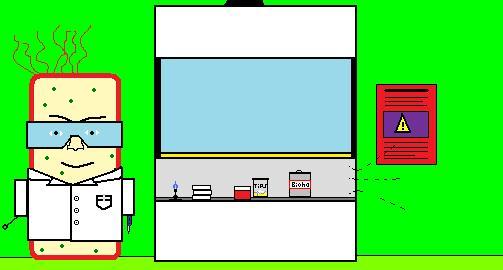Team:Wageningen UR/Safety/Nine
From 2011.igem.org
(→Biosafety and biosecurity considerations) |
(→Biosafety and biosecurity considerations) |
||
| Line 41: | Line 41: | ||
Next to the biosafety rules from Wageningen UR, techniques for working aseptically to perform Good Microbial Practices are generally learned in a Microbiology introductory course. A lab manager, also called a practical tutor, has introduced every team member to the lab by giving them a “safety tour.” Therein, we came across a lot of, rather general, rules we should regard at working in the laboratory. The rules dealt with: the discardment biological and chemical waste, the disinfection of the lab bench, the clothing to wear inside the lab, your way of acting during an emergency and more. | Next to the biosafety rules from Wageningen UR, techniques for working aseptically to perform Good Microbial Practices are generally learned in a Microbiology introductory course. A lab manager, also called a practical tutor, has introduced every team member to the lab by giving them a “safety tour.” Therein, we came across a lot of, rather general, rules we should regard at working in the laboratory. The rules dealt with: the discardment biological and chemical waste, the disinfection of the lab bench, the clothing to wear inside the lab, your way of acting during an emergency and more. | ||
| - | [[File:Biosafety_precautions.jpg|350px|center|thumb|An indication of | + | [[File:Biosafety_precautions.jpg|350px|center|thumb|An indication of the containment measures that are taken.]] |
=== Does your institution have an Institutional Biosafety Committee or equivalent group? === | === Does your institution have an Institutional Biosafety Committee or equivalent group? === | ||
Revision as of 06:19, 4 September 2011
 "
"



